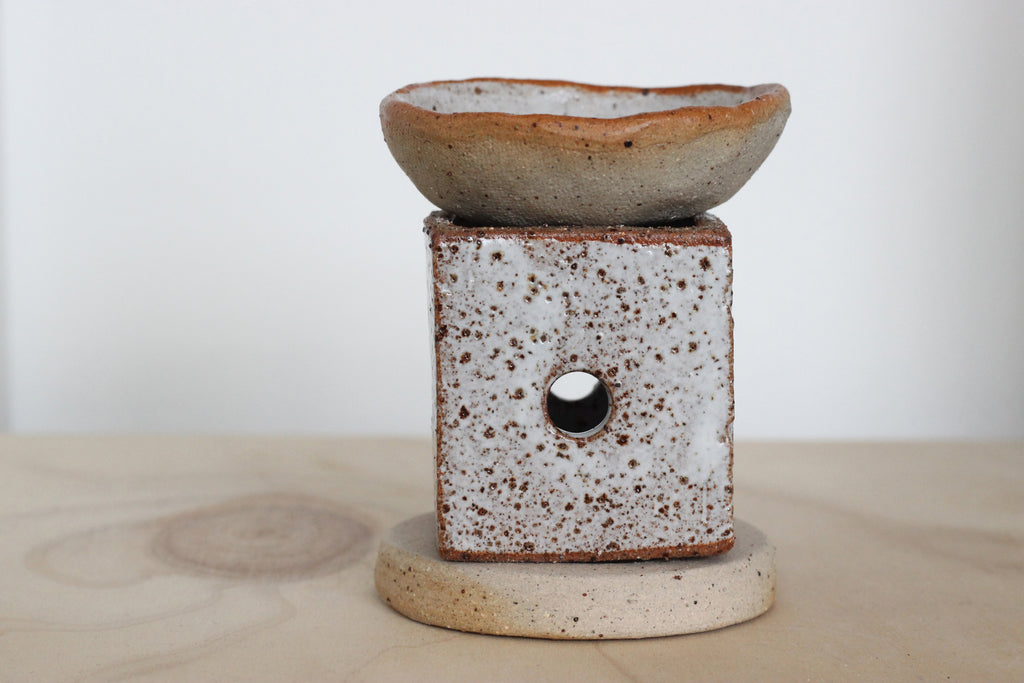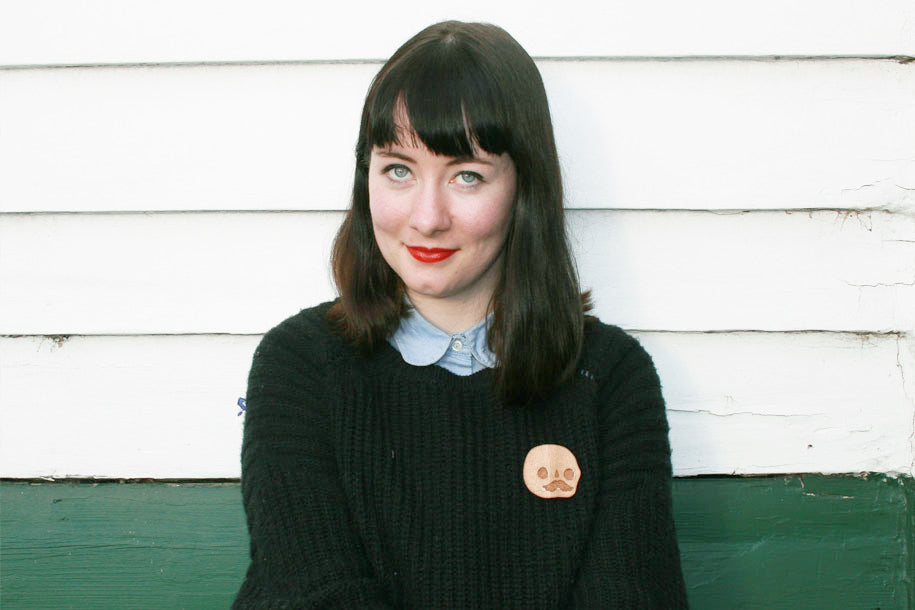For our very first Maker of the Month, we'd like to introduce you to one of our founding ladies! Chela Edmunds is the talent behind Melbourne-based ceramics label Takeawei (pronounced take away). Her works meld organic shapes (and the occasional sculptured boob) with earthy textures and splashes of colour to form fun, functional, hand-crafted pieces.

Can you please tell us a little about yourself and your craft?
I come from a very creative and caring family who have always encouraged my artistic endeavours. I feel very lucky to have that support. I was born on the Sunshine Coast; my parents had a little house that they built at Chenreizig Institute, a Buddhist centre west of Noosa. We were in the middle of the bush, with no electricity and collected water from the dam. My sisters and I grew up very free range, exploring and making things from found objects – billy carts, treehouses, bows and arrows. I think this instilled in me resourcefulness, an appreciation for being creative with what you have.
I have lived up and down the east coast of Australia – city and country; I love both. After working as a textile designer in New York City for a few years, I moved back to Melbourne. I'm just about to move from Brunswick East to Torquay. I will still have my main ceramics studio in North Melbourne but get to spend more time in the ocean!
I studied textile design at RMIT, worked in that field for a few years and then picked up ceramics as a hobby and fell in love. All training aside, I think being an artist is in the way you see and appreciate the small things, and then practice, practice, practice ... whatever craft it is you choose to express those ideas.
When and how did you first get started in ceramics?
I made my mum an incense holder when I was at school. My adult career started about 2012 when I took up night classes at Choplet in New York. It was a way to unwind from working in an office environment. This was around the same time I took up surfing again and I hate to think how different life would be without these two passions. My Instagram has been my visual diary since I started and it's fun to look back and see how my work has evolved.

Can you describe those early days?
I was tired of sitting at a computer all day and wanted something far from the office. I wanted to create with my hands and get dirty, and just have that feeling of getting back to nature! Clay was so immediate, three-dimensional and allowed me to make functional pieces that I could also decorate using skills I had learned in my textile design work.
What has the journey been like since those early days?
Clay is still so exciting to me even after three years of being in the studio nearly every day. I'm inspired by learning new techniques and skills and trying out different equipment to see where it takes my practice. Initially, I started Takeawei on the NEIS program. It allowed me to focus my energy on the creative side of the business, while building it to a point where it could sustain itself financially. It has not been easy, but I would do it all again in a heartbeat. I like the diversity that comes with running my own creative business. I make for wholesale, retail, cafes and restaurants, and still do the occasional textile design for fashion. I am excited to be doing more exhibition work and sharing my skills through teaching Clay Social classes at Guild of Objects.

Can you give us some insight into your creative process?
I mainly use high-fired stoneware, thrown on the wheel and finished with hand-building techniques – adding handles, handpainting with glazes and carving into the clay surface to decorate. I like to create useful, decorative wares that can be appreciated as works of art, but are not afraid of the dishwasher.
My favourite materials are Keane Ceramics clays (they make beautiful clays that are always a great consistency) and a Shino glaze that was gifted to me by a fellow potter (I'm going to be using this in my next collection). I've just returned from NYC with some new tools, including a clay extruder. It makes tubes of clay and I’ll be using it to explore woven clay sculptural forms.
Where do you draw inspiration from?
Absolutely everything. Once you start looking you can't stop and it becomes the way you look at everything. I have found inspiration in the ocean, the moon, eggs, boobs, even the colour of my jeans right now (they're a pretty cool blue).
Can you name another maker that you admire, whose practice might be different to your own, but you find their work or methods inspiring?
I'm biased, I love every designer at Guild of Objects and so many more, but that's why we put this guild together. Currently on my mind are: Jessilla Rogers, her work is a colour explosion that brightens my breakfast table every morning; and Seb Brown, I wear his silver jewellery every day and it makes me feel dressed up and fabulous.
What are you working on right now?
I'm teaching 'Clay Social' classes at Guild which has been really fun, most people haven't touched clay before but everyone walks out with a couple of masterpieces at the end of the night. While I was in New York recently I picked up a clay extruder, essentially its a big tube that attaches to the wall and pushes large lumps of clay through small shapes. I'm nerding out and will be using it for many of my new pieces like the 3 piece oil burner.
3-Piece Oil Burner $75 I had a couple of friends requesting some sort of incense burner/ oil burner for a while. I like the high iron speckle with the white glaze.

Big Mug in Landscape Glaze $65 I love painting these glazes on freely and seeing how they combine to create miniature landscapes.

Takeawei is currently showing as part of the 1-OK CLUB exhibition at NGV Design Store, running August 6 to September 13, and was recently a finalist in the inaugural Victorian Craft Award.
Find Chela on Facebook, Instagram, her website and the Guild Shop.
Continue reading













































